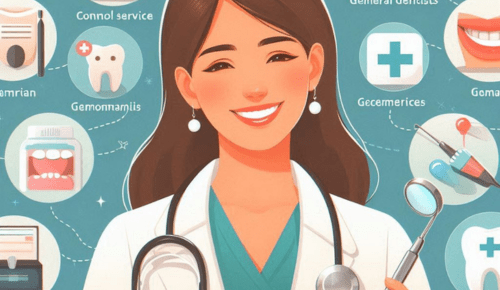Toothache can be extremely painful and discomforting, especially when there’s no visible sign of infection, decay, or injury. Fortunately, dental X-rays can be very useful in such cases when dentists need to diagnose and treat dental issues that are not visible to the naked eye.
A professional dentist in East Dallas would also leave no stone unturned when it comes to an accurate diagnosis. Therefore, when dealing with a dental issue, ensure you visit a dentist equipped to provide X-ray services when necessary.
Different types of dental x-rays
Issues like decay and infection can develop deep beneath the surface and are nearly impossible to notice with human eyes. So, dentists rely on X-rays for the diagnosis of underlying dental issues. Nonetheless, dental X-rays can be divided into two main categories.
Intraoral X-rays
In an intraoral X-ray, the X-ray film is positioned inside the mouth to capture detailed images of the teeth and their supporting structures. Following are the three main types of Intraoral X-rays.
- Bitewing X-rays: A bitewing X-ray allows your dentist to look at a specific part of your mouth, which is why they may request one or multiple X-rays during the checkup. A bitewing X-ray covers visible parts of the upper and lower teeth along with the roots and supporting bones. It can be helpful in the diagnosis of decay.
- Periapical X-rays: A periapical X-ray can capture the entire tooth, from the tip of the crown to the bottom of the root. It is useful when dentists have to detect issues with roots and surrounding bones.
- Occlusal X-rays: Occlusal X-rays are beneficial in detecting the teeth that have yet not broken through the gums of children. It can show the entire arch of teeth on either of the jaws.
Extraoral X-rays
Extraoral X-rays, also known as radiographs, are taken from outside of the mouth. They give a good view of the teeth, jaws, and skull. While they may not be as detailed as an intraoral X-ray, they may be sufficient in some diagnoses.
- Panoramic X-rays: Panoramic X-ray is similar to a panoramic photo, it covers your entire mouth and provides the positions of impacted, emerging, and fully emerged teeth. The patient has to bite on a ‘bite locket’ that’ll keep your teeth aligned for a clear image while a rotating arm moves around the head in a semi-circular motion to record the mouth.
- Cephalometric X-rays: A cephalometric X-ray shows your entire face from the side to allow your dentist to determine the position of your teeth in relation to your jaw. Orthodontists commonly use Cephalometric X-rays.
- Cone beam CT scan: Cone beam CT scan captures a three-dimensional X-ray of your teeth, jaws, joints, nerves, and sinus. Surgeons use CT scans to detect facial fractures and tumors. However, dentists use them to determine the dimensions and location of the jawbone before placing a dental implant.
Understanding what problems can dental x-rays detect
Dentists can use X-rays to determine various underlying dental issues that require a deeper diagnosis.
- In case of tooth decay and cavities, they may go much deeper than they appear. Sometimes, the decay may even reach places that are hard to see, like between the teeth or under the gumline.
- To detect jaw alignment issues and various bite-related problems.
- Some gum diseases may harm the jaw bones. In such cases, the dentists may opt for X-rays to determine if there’s bone loss.
- Dental abscesses and some root canal issues are only visible through X-rays. The dentist may specifically request an X-ray in cases with a high risk of infection.
Final thoughts
Many people perceive that X-rays can be dangerous. However, dental X-ray radiation is very minimal to leave any harmful effect on humans. It emits the same amount of radiation as smartphones, TVs, and computers. So, you can rest assured whenever your dentist requests an X-ray, as it’s entirely safe and helps them diagnose your condition accurately.




